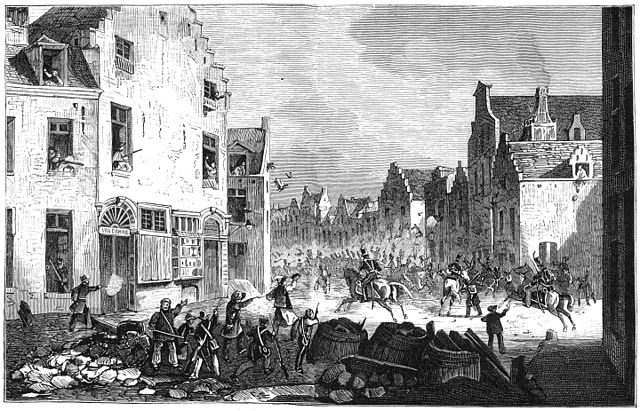Neutral Moresnet was a small Belgian–Prussian condominium in western Europe that existed from 1816 to 1921 and was administered jointly by the United Kingdom of the Netherlands and the Kingdom of Prussia. It was 1.5 kilometres (1 mi) wide and five kilometres (3 mi) long, with an area of 360 hectares. After 1830, the territory's northernmost border point at Vaalserberg connected it to a quadripoint shared additionally with the Dutch Province of Limburg, the Prussian Rhine Province, and the Belgian Liège Province. Its former location is represented presently by the Three-Country Point, the meeting place of the borders of Belgium, Germany, and the Netherlands.
Neutral Moresnet on a postcard c. 1900
Memorial to the sons of Neutral Moresnet fallen in both armies during World War I, in the right portal of the Our-Lady-of-Assumption church. At bottom, in German: "United in death, R.I.P."
Local museum dedicated to the former territory
United Kingdom of the Netherlands
The United Kingdom of the Netherlands is the unofficial name given to the Kingdom of the Netherlands as it existed between 1815 and 1830. The United Netherlands was created in the aftermath of the Napoleonic Wars through the fusion of territories that had belonged to the former Dutch Republic, Austrian Netherlands, and Prince-Bishopric of Liège in order to form a buffer state between the major European powers. The polity was a constitutional monarchy, ruled by William I of the House of Orange-Nassau.
King William I
Dutch troops in the Flemish city of Dendermonde in 1820
Fighting between Belgian rebels and the Dutch military expedition in Brussels in September 1830






